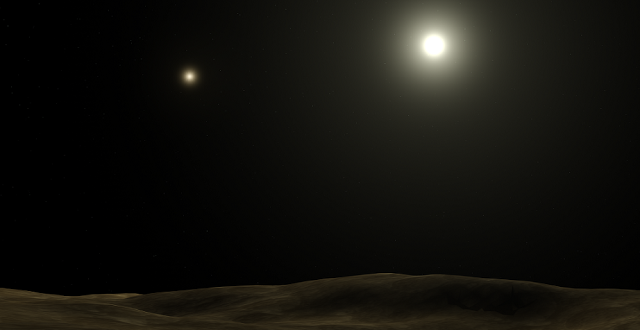Alpha Centauri—our first target for interstellar probes?

With the completion of New Horizons' Pluto fly-by, its primary mission, should we now set our sights even higher, ambitiously taking aim at other star systems? If so, Alpha Centauri would probably be considered as the best target for an interstellar spacecraft due to its "proximity" to Earth. This system, consisting of three stars and possible planetary companions, is the nearest to the solar system, located "only" about 4.3 light years from the sun. The problem is that getting there within a human lifetime is still a mission impossible—or is it?
The neighboring system hosts a pair of stars named Alpha Centauri A and Alpha Centauri B. Alpha Centauri C, also known as Proxima Centauri is a small and faint "red dwarf"—a small and relatively cool star – and may be gravitationally bound to the duo. However, what baffles astronomers is the existence of exoplanets in this system. In 2012, the discovery of a planet orbiting Alpha Centauri B was announced, but three years later, new research disproved this theory, calling the previous finding a "ghost in the time series." Moreover, in 2015, another study proposed the existence of an alien world orbiting the "B" star.
Interestingly, the two hypothetical exoplanets would probably be Earth-like if they really exist. This could be another motivator to send spacecraft there. But before any mission concepts are prepared, a deeper look into the system could be very helpful. The obstacle is that we don't currently have a telescope that can directly image a planet in this system.
"This would have to be done from space—even then, it would be hard. We don't have a space telescope that can do this right now, especially for small planets. There are no gas giant planets there. If there were any, we would have detected them," Debra Fischer, astronomer and exoplanet hunter at the Yale University, told Astrowatch.net.
4.3 light-years equals 25 trillion miles, so knowing at least some basic information about this destination is quite essential before embarking on such a demanding trip. Using current technology, a robotic probe sent from Earth would require some 40,000 years to reach Alpha Centauri, making the mission irrelevant.
NASA's New Horizons spacecraft, which is the fastest-moving spacecraft ever launched from Earth, currently travels at about 36,400 mph. If the probe was aimed at the Alpha Centauri system, it take 78,000 years to arrive!
A huge technology advance is required to make interstellar journeys feasible. Unless a new propulsion system can be developed, every interstellar mission concept is doomed to fail.
"Once we have the ability to accelerate a probe to 10 percent the speed of light, that is the first place we'll go! It's the closest star system and therefore a great target," Fischer said.
In the past, project proposals included sending unmanned interstellar spacecraft with a velocity of 4.5 or even 7.1 percent the speed of light. Between 1973 and 1978, a study was conducted by the British Interplanetary Society to send a probe using a fusion rocket that would reach Barnard's Star, located 5.9 light years away. The study, named "Project Daedalus," aimed to develop a spacecraft capable of reaching up to 7.1 percent the speed of light; thus, the entire journey would take only 50 years.
A similar study, "Project Longshot," was developed by the U.S. Naval Academy and NASA, from 1987 to 1988. The project would use a spacecraft powered by nuclear pulse propulsion to reach an average velocity of approximately 30 million mph (4.5 percent the speed of light). That would allow the mission to arrive at Alpha Centauri some 100 years after launch.
There are many concepts and projects tasked with designing a future propulsion system to allow interstellar travel. Contrary to ideas based on conventional propulsion, many concepts include using antimatter rockets, warp drive or wormholes.
A laser-powered interstellar sail ship is an original concept that seems feasible in the near future. It was presented by Geoffrey A. Landis of NASA's Glenn Research Center in 2002. Landis described a starship with a diamond sail a few nanometers thick, powered by solar energy, which could achieve 10 per cent of the speed of light. Using this type of propulsion, it would take 43 years to reach Alpha Centauri, assuming it simply passed through the system. However, slowing down to stop at the neighboring system could increase the trip by up to 100 years. Thus, it would be more appropriate for a fly-by mission performed by an unmanned probe.
When will we be able to develop such a propulsion system allowing travel at around 10 percent the speed of light? That remains in dispute.
"We have to have the probe travel faster than 10 percent the speed of light and we need a high-gain antenna in the outer solar system to pick up the signal that the probe sends back. This is a technology horizon that currently seems far away. 50 years? 100 years? Hard to say!" Fischer said.
Source: Astrowatch.net


















